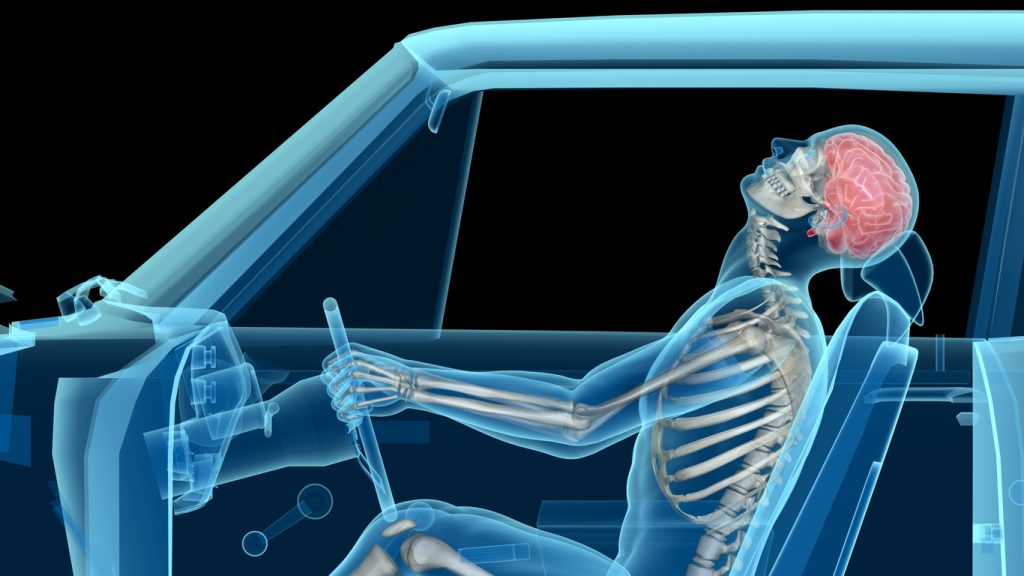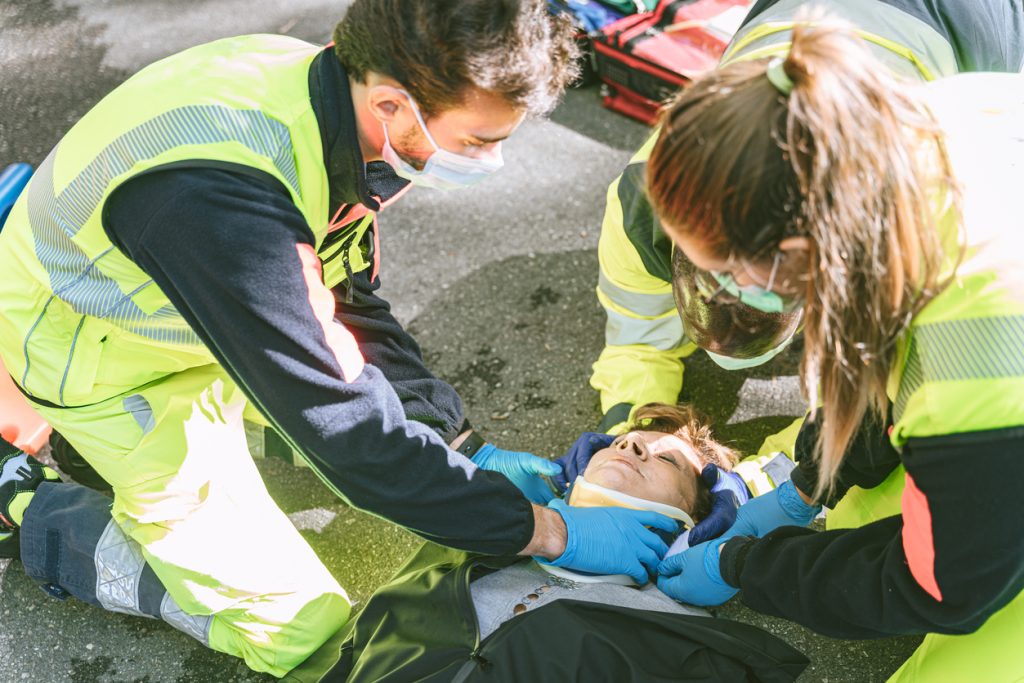The human body is not made to absorb the impact of a motor vehicle accident. The violent motion that occurs during an accident can affect all areas of the spine as well as surrounding nerves, ligaments, tendons, and muscles. In addition to the immediate injury, the trauma can result in degenerative disc disorder years later.
Over one third of back injuries each year are due to auto accidents. Even a low speed collision can cause significant back and neck injury. People with existing back or neck issues may find that their problems increase following an accident.
The following medical conditions may result from an auto accident.
Whiplash

This is the most common injury suffered when someone is rear-ended. The neck suddenly and forcibly snaps back and forth in a rapid manner, resulting in trauma to the cervical spine. Muscles, tendons, discs, and nerves can be damaged. Common whiplash symptoms include neck pain, neck stiffness, loss of motion in the neck, headaches, dizziness, and numbness or tingling in the arms.
Herniated Disc
A herniated disc can result from trauma suffered in an auto accident. Discs act as shock absorbers between the vertebrae. An accident can cause a disc to shift and compress a nerve. If the outer ring of the disc ruptures, the gel-like center part can leak out and irritate a nerve. Depending on where the herniated disc is located, sharp pain can radiate down the arms or legs. Other symptoms include burning pain, muscle weakness near affected nerves, and tingling or numbness.
Fractured Vertebrae

Trauma from an accident can result in a fractured vertebrae. Types of fractures include flexion fractures, compression fractures, and dislocations. Symptoms of a fractured vertebrae include sudden onset of back pain, loss of mobility, decreased height, stooped posture, and pain that becomes worse with standing or walking.
Diagnosing the Problem
Physicians may use one or more of the following diagnostic tests to determine the cause of the pain.
- X-rays – A common diagnostic tool that enables doctors to pinpoint areas of concern and recommend treatments.
- MRI – A superior imaging technique that takes highly detailed images or slices of the anatomy. MRIs are radiation free.
- CT scan – Used for a more detailed look at the spinal cord or discs. A CT myelogram incorporates a dye or contrast for greater visibility.
Next Steps
Many back and neck injuries will require only short term care. Surgical treatments are available for patients who have not responded well to more conservative treatments. The physicians at Atlanta Brain and Spine Care are experts in the diagnosis and treatment of conditions affecting the spine. If you suffer from back or neck pain following an auto accident, contact us today to schedule an appointment.


